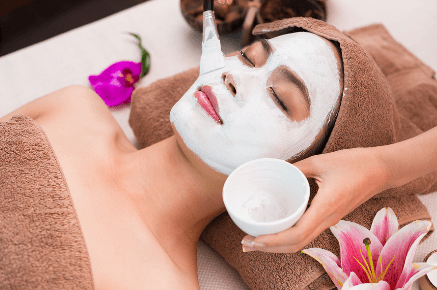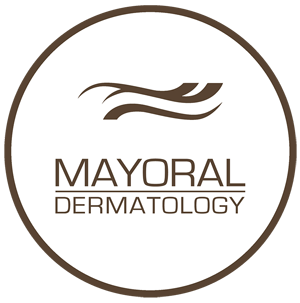
Possible Side Effects of a Peel
The “chemicals” used in a chemical peel are actually mild acids that exfoliate the top layer of the skin to reveal new skin that is smoother, evenly toned and fresher looking. Mild to moderate chemical peels include different concentrations of glycolic and alpha hydroxy acid, ingredients commonly found in over the counter wrinkle creams. Licensed dermatologists are qualified to apply concentrations of up to 80 percent alpha hydroxy acid for patients desiring a more youthful, glowing complexion.
Normal reactions to chemical peels include redness, minor swelling and peeling, which generally last between three to five days depending on whether the patient received a mild, moderate or deep peel. When all post-treatment instructions are correctly followed, nearly all patients experience no adverse side effects and are thrilled with the results of the peel. In fact, Mayoral Dermatology has many clients who routinely come in for a chemical peel in order to maintain flawless-looking skin.
Because deep chemical peels use phenol, a carbolic acid applied to skin that contains severe pitting and scarring, deep lines or extremely visible discolorations, the after effects of this peel are more intense and continue longer than those of a mild to moderate chemical peel. Instead of taking off the uppermost layer of skin, phenol peels reach into the epidermal layer where more skin cells are destroyed in order to eliminate skin conditions that extend deeper into the skin.
Ways in which you can facilitate recovery following a chemical peel include resisting the urge to scratch skin that often itches or burns as it is healing from the peel. Instead, place a cold compress against areas that itch or burn to numb the irritation. Keep the treated skin hydrated by using any ointments provided by your dermatologist. Skin that is allowed to dry out following a chemical peel may start cracking, which could result in scarring or discoloration. Wear sunscreen whenever you venture outside prior to completion of the healing process and don’t pick at those tiny scabs that emerge following a moderate to deep peel.
For people with specific skin types, the risk of having changes occur to the color of their skin exists with all levels of chemical peels. Taking birth control pills, pregnancy and having a genetic tendency to develop brown or tan facial discolorations could increase the potential for atypical pigmentation to emerge following a chemical peel. Some research has indicated that people who have a history of suffering cold sores may experience a reactivation of the herpes simplex virus due to the chemicals used in a peel.
Possible Side Effects of Facials
Facials are deep-cleansing procedures performed by licensed estheticians or dermatologists that use a variety of creams and ointments combined with skin exfoliation and blemish extraction techniques to rejuvenate skin damaged by sun exposure, excessive oil or even prolonged illness. Facials do not employ acids that chemical peels use so any side effects experienced by patients undergoing facials are not as intense nor do they extend past a day or two. The exfoliation and extraction steps are the most important component of a facial and should only be performed by professional estheticians who are able to expertly assess the condition of the skin prior to beginning the facial.
Facial extractions involve your esthetician removing any skin contaminants such as pimples, blackheads or whiteheads. When done correctly, the extraction process presents no risk to the patient and is virtually painless. However, people with acne generally do not experience the extractions stage of a facial, since irritation of already inflamed skin will just exacerbate the existing condition.
Directly following the completion of a facial, your skin may sting slightly or appear reddened but these conditions usually disappear after a few hours, leaving you with clean, radiant skin that is free of blemishes, evenly toned and astonishingly smooth.
Chemical peels and facials are safe, effective and popular methods for revitalizing skin that is wrinkled, sun-damaged or just requires some professional TLC by the specialists at Mayoral Dermatology. For more information about the safety of these exceptional skin rejuvenation procedures, call our office today and talk to one of the friendly, caring staff at Mayoral Dermatology.

